The BEST episodes of Edwardian Farm
Every episode of Edwardian Farm ever, ranked from best to worst by thousands of votes from fans of the show. The best episodes of Edwardian Farm!
Archaeologists Alex and Peter and historian Ruth attempt to bring Morwellham Quay in Devon back to life as it was in its Edwardian heyday.

#1 - September
Season 1 - Episode 1 - Aired 11/10/2010
In September they begin with the basics. They set up home in one of the cottages, where the first task - after cleaning - is unblocking the chimney so they can get the range working in order to cook. They prepare for the arrival of their first livestock - a flock of sheep and a ram called Cyril, and Ruth cheers up the cottage by making a rug out of rags. And she cooks her first meal on the range - a sheep's head stew. Alex builds a hay rick to store feed for the animals over winter; while Peter heads to Bodmin moor to carve a stone feeding trough. And they must plant crops. The high acidity of the soil makes it infertile for growing crops, so the top priority is neutralising the acid with fertilizer - and for this they must make deadly quicklime. They will need literally tonnes of the stuff. It is a hazardous and gruelling - but essential - job.
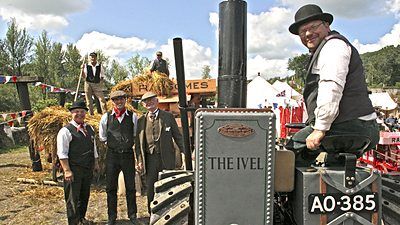
#2 - August
Season 1 - Episode 12 - Aired 1/19/2011
August brings the climax of the farming year - and the end of 12 months on the Edwardian Farm for archaeologists Alex Langlands and Peter Ginn and historian Ruth Goodman. The team must harvest their oat crop, but everything depends on the weather. Constant rain is making the job impossible. It is crucial to be able to predict when a dry spell will come so that they can be prepared to swing into action. They investigate ways of forecasting the weather and embark on creating a weather vane. Peter tries his hand at the art of repousse to make a copper cockerel for the vane, and the team heads for the woods to do a traditional charcoal burn in order to smelt iron for the compass points. When the rain finally clears, the team deploy the latest in Edwardian farming technology for the oat harvest - including a tractor that was then state-of-the art, the 'Moghul'. And the event is captured by an Edwardian film crew - tapping into the very latest in Edwardian fads: the cinema. To celebrate the end of harvest, the whole town enjoys a grand fete sporting new innovations such as the electric light bulb, the latest threshing machines, the petrol-powered Lister engine and a genuine flying machine. The Edwardian era ended with an event that changed the countryside forever - the First World War. Michael Morpurgo, author of the play War Horse, comes to the farm to give Alex, Ruth and Peter an insight into the consequences. Although the human cost was dreadful, the growth of mechanization meant many rural areas had labour to spare. But over a million horses were also drafted into service - and only 60,000 came back - paving the way for tractors to finally replace horse-power. Farming would never be the same again.

#3 - October
Season 1 - Episode 2 - Aired 11/17/2010
In October, the Edwardian farmers branch out into new ventures like market gardening, all-year-round egg production and beef cattle. After acquiring a beef herd, the team bring in a bull. They also begin training the shire horses for a year of work in the fields. And they take on a pair of goats who prove to be more than a handful at milking time. Morwellham Quay's market gardens were once one of the nation's largest producers of strawberries, until abandoned half a century ago. Now the team attempt to bring them back to life. Cider was a vital part of the Edwardian rural economy, so Alex and Peter attempt to follow in this tradition by making it on an industrial scale - using an Edwardian cider press and a ton of apples. Ruth preserves supplies for the winter: she pickles apples, salts a ham and smokes bacon. Peter visits a cooper and learns how to make a barrel, and Alex launches a chicken enterprise. Finally they see in the winter with Halloween - Edwardian style.
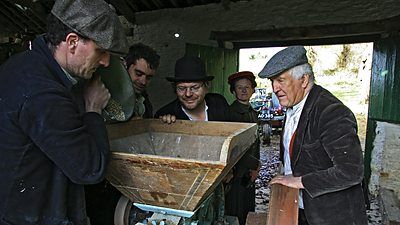
#4 - November
Season 1 - Episode 3 - Aired 11/24/2010
It's November and to prosper as Edwardian farmers, Alex, Peter and Ruth need to get to grips with the technologies of the age and use Edwardian science to set up an exciting new venture on the farm. Alex and Peter want to grow oats, essential as feed for their livestock, and potatoes, a reliable source of income. But first they must plough the land. Most Edwardian farmers still relied heavily on horse power, but new technology was on the horizon. A travelling salesman makes a dramatic entrance bringing a piece of the state-of-the-art machinery from the Edwardian age - the world's first tractor, the Ivel. Ruth prepares for the arrival of the farm's pigs by restoring the farm's pig sty privy - an ingenious construction combining a pig sty with a lavatory so that pig waste and human waste could be composted in one place. After introducing the pigs to their new home, Ruth grooms them. Peter embarks on building a trout farm and populating it by using revolutionary fish-breeding techniques that were new to Devon's Edwardian farmers. And Alex wants to maintain the farm's hedgerows - but first he'll need to learn how to forge a Devon billhook using water-powered technology. After all their hard work, Ruth cheers the team up by making sloe gin and acquiring an Edwardian musical novelty - a gramophone.
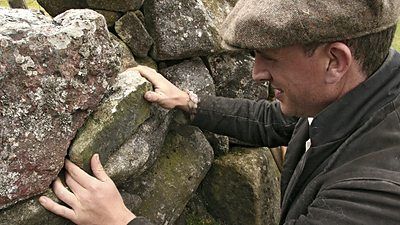
#5 - June
Season 1 - Episode 10 - Aired 1/6/2011
It's June, and archaeologists Alex Langlands and Peter Ginn and historian Ruth Goodman head up to Dartmoor to discover the ways in which Edwardian farmers took advantage of this unique and spectacular landscape to add to their income. The team follows a flock of sheep up on to Dartmoor, where it was traditional for many shepherds to take their flocks for summer grazing. Alex and Peter get to grips with shearing, while Ruth takes the fleeces off to a wool mill to find out how it was processed and manufactured. Dartmoor was already becoming a popular tourist attraction, popularized by Edwardian celebrities - such as Sir Arthur Conan Doyle who made it the setting for his classic Sherlock Holmes crime thriller The Hound of The Baskervilles. There's a visit from Rupert Acton - the team's land agent during their previous Victorian Farm adventure - who arrives with his family in a vintage Rolls Royce. The team have a picnic with them before exploring Dartmoor using historic maps that enable them to follow an authentic Edwardian hiking trail.
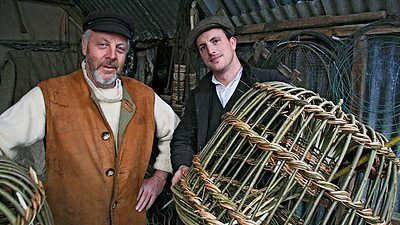
#6 - December
Season 1 - Episode 4 - Aired 12/1/2010
It's December and, as winter sets in, Alex, Peter and Ruth face the challenge of earning a living in one of the hardest months of the year. They'll have to profit from their livestock, leave the farm in search of part-time work and head to the coast to reap the ocean's bounty. With poverty rife in the countryside, Edwardian farmers often had to find additional work away from their land. Alex and Peter follow in the footsteps of Tamar Valley farmers who traditionally took advantage of living between the North and South Devon coasts to profit from the county's other great industry - sea fishing. Ruth follows the growing number of Edwardian women who entered domestic service. She goes to a grand Edwardian stately home, Lanhydrock House, where she encounters luxurious novelties such as running water, electric lights and even prototype vacuum cleaners. But when Alex and Peter have little luck on their seafaring fishing expedition, Ruth has to prepare a poor man's Christmas lunch.
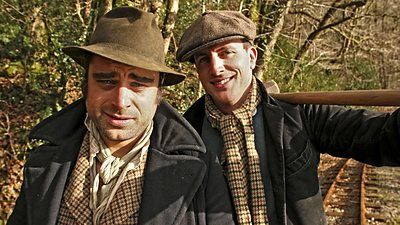
#7 - January
Season 1 - Episode 5 - Aired 12/8/2010
Archaeologists Alex Langlands and Peter Ginn go down a copper mine, just a few hundred yards from their cottage, which was once the major source of Morwellham Quay's wealth. In the 19th century the largest deposit of copper in Europe was discovered in Devon. And the mining industry made Morwellham the busiest inland port in Britain. In the latter half of the century rising costs and cheap foreign imports put the copper mining industry into decline. But resourceful Devon farmers found other ways to extract income from copper - such as 'fossicking' (literally scavenging by breaking up rocks overground) and building precipitation tanks which extracted copper deposits from the water which flowed out of the mines. Meanwhile, historian Ruth Goodman learns the art of lacemaking, visiting the town of Honiton which became world famous for its lace, renowned for its beauty, delicacy and intricacy. Once half the inhabitants of east Devon were lacemakers. The boys also go tin mining in Cornwall, an industry which survived until the end of the 20th century when the last mine closed in 1998. But it's a gruelling trade, full of risks. They drill blast holes by hand and get to grips with tools such as the grimly nicknamed 'the widow-maker'.
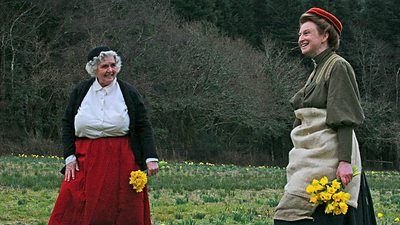
#8 - March
Season 1 - Episode 7 - Aired 12/19/2010
It is March and Ruth Goodman, Alex Langlands and Peter Ginn greet the long-awaited arrival of spring. It is time to bring in the daffodil harvest. During it's heyday in the early 20th century, the Tamar Valley was the largest producer of early daffodils in Britain - the result of the region's mild climate combined with the arrival of a railway, which meant produce could be delivered to towns and cities across Britain within hours of being picked. The team takes their daffodil crop to the train station and gets to grips with the workings of the Edwardian steam-powered railway system. Ruth's daughter, Eve, arrives on the train to spend Mothering Sunday on the farm - an important occasion in the Edwardian calendar. For the many daughters who worked away in service, it was the only time in the year when they could get time off to return home. Alex and Peter fertilize the potato crop - which requires 10 tonnes of well-rotted horse dung. They also go up to Dartmoor for the annual pony trek - a time when wild ponies on the moor were rounded up. They select a new pony for the farm. The pony needs training before he's fit for work and Mike Branch, a specialist trainer from Tennessee, arrives. He's following in the footsteps of American farmer John Solomon Rarey, who in the 19th century found fame and fortune in Britain with his revolutionary method of taming wild horses. Instead of 'breaking' the horse physically, he used the technique now known as 'horse whispering'. After a bumper daffodil harvest and having seen all the ewes successfully give birth to their lambs, the team are in high spirits for the celebration of Easter - which means feasting, a special church service and surprise for Ruth.
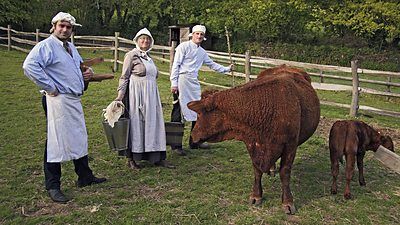
#9 - May
Season 1 - Episode 9 - Aired 12/31/2010
It's May and, with Empire Day approaching, a very special boat comes to the Valley. The paddle steamer, Monarch, is arriving: one of only three in the country that's still operational. It's the first time such a vessel has arrived at Morwellham Quay in 80 years. Back in the Edwardian period thousands of tourists began coming to the Tamar Valley by paddle steamer every summer. The combination of reduced working hours and greater mobility encouraged a new form of tourism - day-tripping. Workers from towns and cities like Plymouth flocked to rural spots like Morwhellham Quay for festivities. Local farmers cashed in on the visitors - selling them cream teas, fresh fruit, postcards and anything else they could think of - and also used the steamers to send their produce to market. So historian Ruth Goodman and archaeologists Alex Langlands and Peter Ginn pull out all the stops to put on a party for the tourists: they've got to milk a cow who has never been milked before; take lessons in traditional clotted cream making from the instructors at a 'travelling dairy school'; and learn to make a special Devon accompaniment to cream teas - the highly popular 'cut round' (a Devonshire version of a scone). On top of that, they must harvest their strawberries to get them to market on the paddle steamer. They must also come up with more things to sell: drawings of the Tamar Valley, bouquets of flowers, and ice cream - not easy to make when you don't have a freezer.
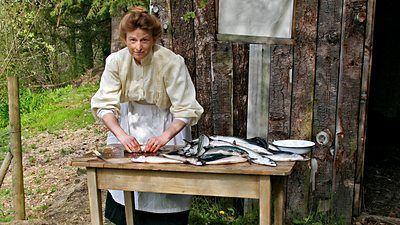
#10 - April
Season 1 - Episode 8 - Aired 12/24/2010
It is April and the fishing season has arrived - a time when Devon's 'fisherman-farmers' went to sea. Alex Langlands and Peter Ginn go to sea in an Edwardian trawler, hastily finishing repairs before setting sail. They master the singing of sea shanties as well as steering a wind-powered vessel and casting a net the old-fashioned way - but will they catch any fish? Women were considered bad luck at sea, so Ruth Goodman stays ashore. She forages on the sea shore and prepares potted shrimp. She also builds a smoke-house and smokes some mackerel. Peter and Alex drive their herd of cattle along a dangerous drove road to find new pasture and prepare for the birth of the herd's first calf. Alex makes a coracle that Peter tests out on the pond; and Ruth explores one of the growing fashions of the Edwardian era by holding a séance.
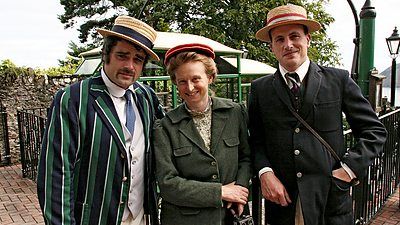
#11 - July
Season 1 - Episode 11 - Aired 1/12/2011
It's July and the team face their busiest month so far on the farm. It's time to bring in the cherry harvest with the help of their Dartmoor pony Laddy, and enjoy a cherry feast to celebrate. Historian Ruth Goodman tries her hand at salmon netting, while archaeologists Alex Langlands and Peter Ginn take drastic measures to save their potato crop from being destroyed by blight. Alex goes to an Edwardian school room - complete with Edwardian discipline - to recruit a traditional rural source of cheap labour: children. Ruth learns how to make a bathing suit out of wool, and there is a rare opportunity for a day away from the farm, as the team go on a church outing to the seaside.
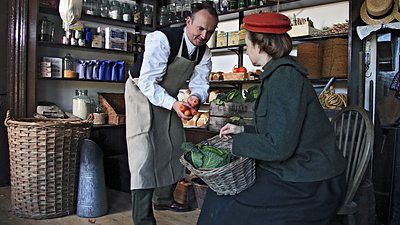
#12 - A Day in the Life (February)
Season 1 - Episode 6 - Aired 12/15/2010
It is February and archaeologists Alex Langlands and Peter Ginn and historian Ruth Goodman approach the half way point in their year on the Edwardian Farm. To mark the occasion this episode explores one single day in a typical Edwardian farmer's life. Incorporating a remarkable cache of letters written in the 1900s in a cottage at Morwhellham Quay, 'A Day in the Life' reveals the hidden stories of how ordinary rural Edwardians got by. We see how Edwardians prepared for the day when they got up in the morning - from struggling into a corset and Edwardian hair-styling to shaving and what they used to brush their teeth. Through the day we follow the team's routine - managing the animals; re-stocking the feed-store; tending the land; caring for an injured goose that's been attacked by a fox; going shopping; receiving a visit from an eccentric travelling salesman; and a football match against the Plymouth Argyle legends played under strict Edwardian rules - which means no off-side, no red or yellow cards, and wearing very, very heavy boots. And in between, of course, there's breakfast, lunch, dinner and a visit to the local pub to round-off the day.